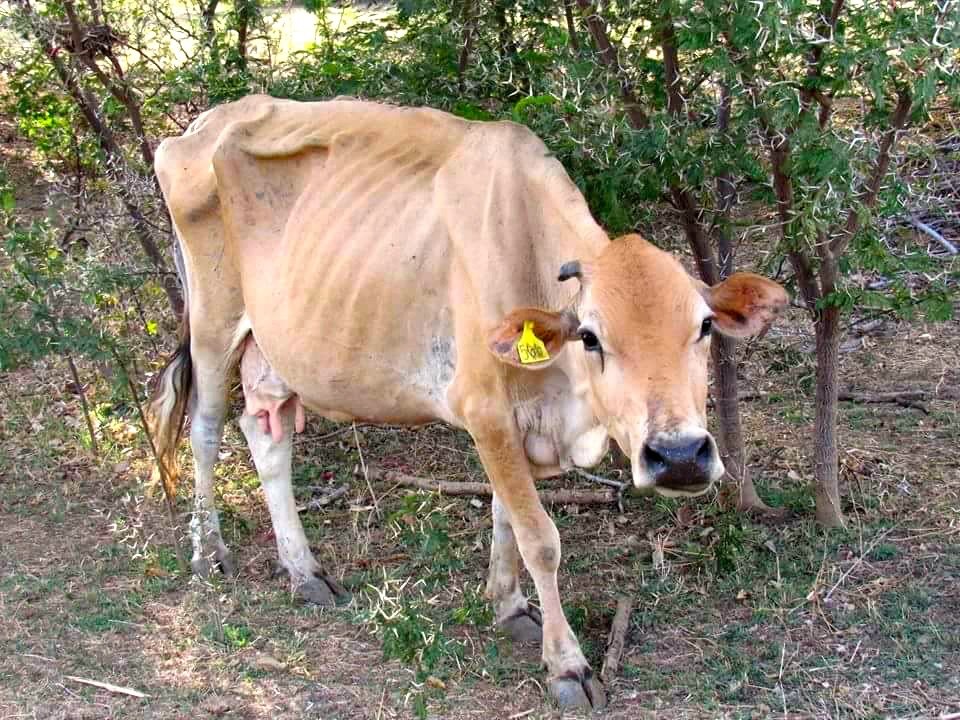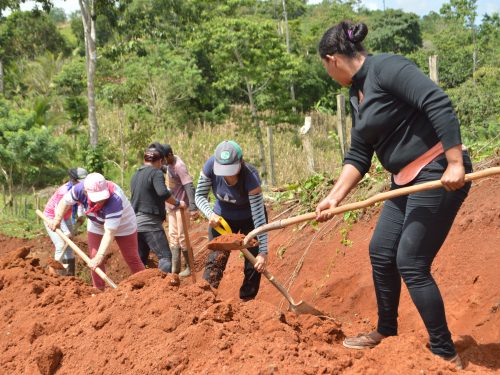
Thousands of hectares of farmland lost, hundreds of cows dead from lack of water and food, farmers in debt and without resources to pay their debts—these are among many of the complaints that were expressed by producers on Friday, May 29th, at a meeting with several government officials.
The meeting to discuss the situation was held in the meeting room of Coopemapro in Santa Cruz and was attended by Luis Felipe Arauz, Minister of Agriculture and Livestock (MAG-Ministerio de Agricultura y Ganaderia), Ivan Brenes, president of the National Emergency Commission (CNE- Comision Nacional de Emergencias), legislators Marta Arauz and Juan Marin, representatives from the cantons’ chambers of farmers and agricultural producers.
The producers claim that the emergency decree issued due to drought on September 30, 2014, was just words on paper since they haven’t seen any concrete actions in eight months.
According to the farmers, in recent weeks forty cattle have died in the canton of Santa Cruz and about 100 head of cattle have died in Carrillo, in addition to the malnutrition due to lack of water and food that threatens hundreds of animals.
A similar situation has been reported by farmers in other cantons like Hojancha, Abangares Nandayure and Nicoya.
“We request forgiveness of debts. We have lost almost everything and we don’t have a way to face this situation, which is leaving us with one hand behind our backs and the other ahead. It’s time that you, as authorities, don’t just listen to us, but resolve [the situation],” said Cristino Carrillo, a cattle rancher in the canton of Carrillo.
The majority of the ranchers have borrowed funds from the International Development Bank, with amounts totaling close to ¢350 million ($660,400).
Ivan Brenes, president of the CNE, restored some hope to ranchers by announcing that by June, they will be distributing about a billion colones ($1.9 million) in supplies in this sector, which will benefit about 4000 farmers.
The aid will provide molasses, bales of hay, minerals, citropulpa (citrus pellets) and minelaza (powdered molasses).
For the agricultural sector, they have allocated around ¢650 million ($1.2 million) in supplies that will benefit about 3,300 farmers.
These resources will be channeled through the Ministry of Agriculture and Livestock.
Brenes acknowledged that the National Emergency Plan’s processes for implementing resources take longer than they should, but the current government is making efforts to ensure that these resources are implemented as soon as possible.
Likewise, the chief said it is important to differentiate between mitigation and permanent actions. “The drought problem is not solved by carrying cisterns or bales of hay to communities. These are mitigation measures (temporarily solve the problem). We have faced The El Niño phenomenon since the 70s, and the country has not planned for this. We have to plan in a permanent way. We can’t expect to solve these problems with emergency declarations,” Brenes said.
Brenes indicated that the current government does thoughtful and intelligent planning. In addition, he called for the institutions involved in the emergency declaration to be more dynamic. “This decree should be executed in a period of less than two years but institutions should move on it. They should propose projects now. There is a commitment because the need is today. It is useless to drill wells in Guanacaste in two years when El Niño will no longer be here but instead La Niña, and Guanacaste will be flooded and we will be drilling wells… Sorry, but that would be ridiculous,” Brenes said.
Photo Julio Peña Lara








Comments